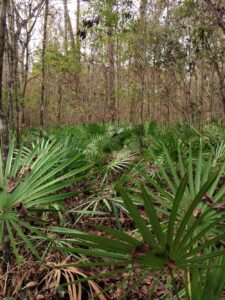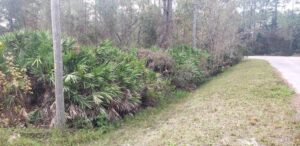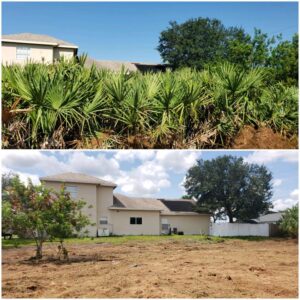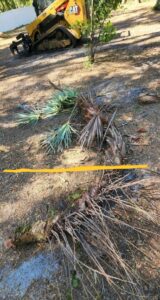
It is hard to escape having palmettos on your property. Having a few palmettos is manageable; however, having a large concentration of them can be a nightmare.
Saw Palmetto, commonly referred to as “Palmetto”, is a shrubby palm species native to Florida. They typically grow in clumps about five to ten feet tall and spreads four to ten feet wide. Palmetto leaves and Drupes (round fruits that ripen in the Fall) provide cover for the venomous  Pigmy Rattlesnake while also reducing quality pasture grass. If that wasn’t reason enough to get rid of them, they are a serious issue in non-cropland areas throughout the state, and are invasive with a lifespan of up to 700 years.
Pigmy Rattlesnake while also reducing quality pasture grass. If that wasn’t reason enough to get rid of them, they are a serious issue in non-cropland areas throughout the state, and are invasive with a lifespan of up to 700 years.
How to get rid of Palmettos?
Maintain – Palmettos that can be maintained in their original clumps with a lawn mower or weed-whacker. Keeping them from spreading is an ideal option when you only have a few on your property. Palmettos can be not only ornamental to a Florida landscape, but they also bloom in the Fall producing berries that are an important food source for many mammals and birds (including the monk butterfly). The key to maintaining Palmettos is to either mow, weed-whack, or cut in some way the palm frond as soon as it breaks the soil line. Depending on how fast you cut the frond and how hardy the palmetto’s root system, it can take a few times; however, without the ability to get light, the palmetto will die.
Forestry Mulch – While Palmettos can be mulched, they do not produce what we consider to be mulch. This is because the palmetto is not a woody plant. The inside of a palmetto is very fibrous and when it is mulched it is like cutting into Kevlar. A palmetto-infested property will have strands of palmettos -not mulch- after mulching. Post forestry-mulching the property owner can expect for about half of the palmettos to die off and half will come back. These can be maintained with a mower or weed-whacker.
ShadowCat Customer with Palmetto-Infested Property. Before and After Forestry Mulching

Root Raking – We only recommend root raking palmettos when there is concrete being poured in the area or horses are present. However, there are times when a property owner opts to have palmettos root raked instead of having to maintain the 50% regrowth. In those instances, we use our grapple claws to pull the roots of the palmetto out of the ground. The roots are typically as long under the soil line as the palmetto is tall above it. The photograph below is a Palmetto we root raked. The yellow line indicates the ground line for the Palmetto, everything above the line was above ground and everything below the line was under ground. An up-rooted Palmetto has a strange, almost alien-like.







Leave a Reply
You must be logged in to post a comment.